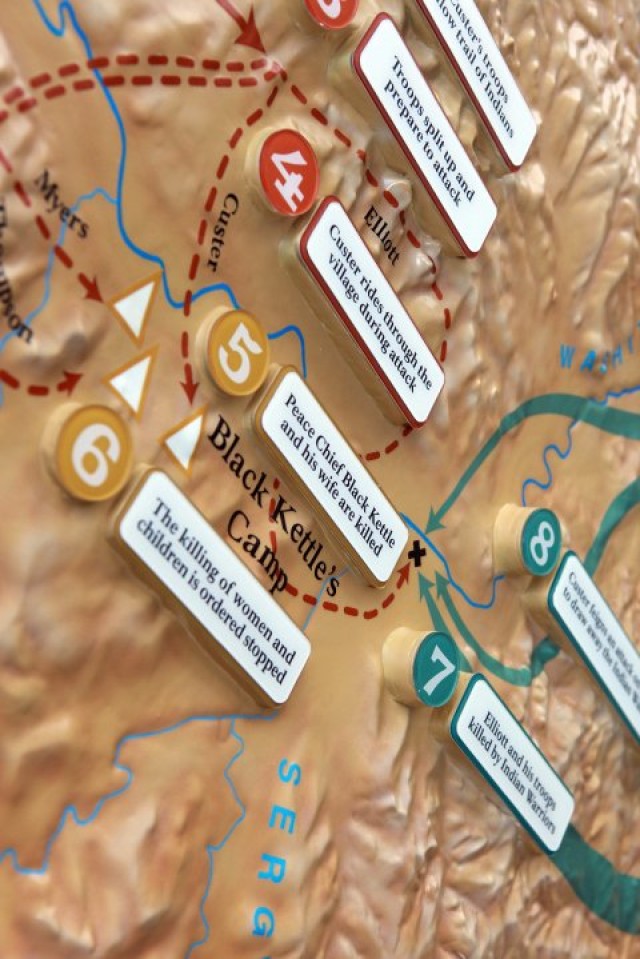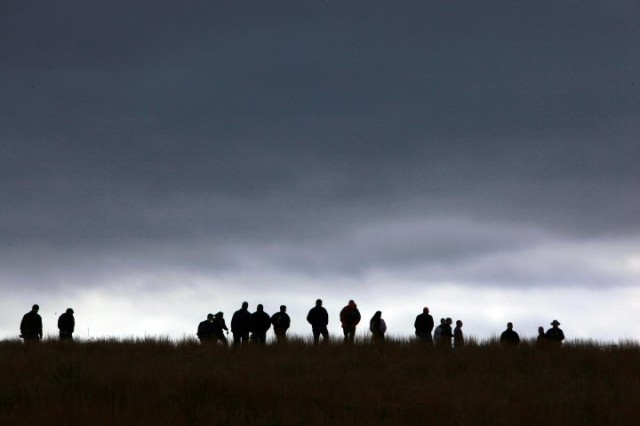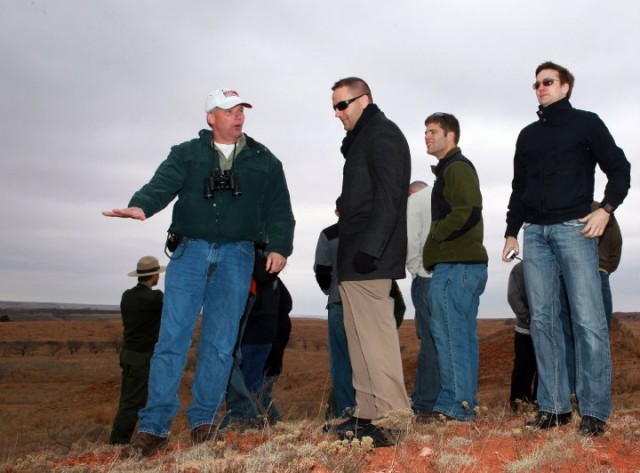A U.S. Army force finds itself in a foreign territory with an indigenous population which has multiple tribes.
It's a confusing, hostile environment and the Army commanders don't know the insurgents from the friendly forces. The leaders wonder if they can even trust their own scouts, who come from a rival tribe. In addition, they have to deal with prisoners of war, collateral damage and infrastructure issues.
Although this could be a dilemma facing an Army commander in today's theaters, it's what Lt. Col. George A. Custer, 7th U.S. Cavalry, had to deal with at the Washita Campaign in Indian Territory more than 140 years ago.
Students in Fort Sill's Air Defense Artillery Captains' Career Course took a staff ride to the Washita Battlefield National Historic Site Friday near Cheyenne, Okla., as part of their academic curriculum. To prepare for the visit, they analyzed the battle and Custer's strategy and rationale, studied U.S. policies on the resettlement of Native Americans in the 1860s, as well as the history of some tribes in what would become Oklahoma.
"It was a great experience," said student Capt. Paul Lopez. "The timing was good too since we're about a month and a half from graduation, we had a chance to refresh our information on tactics."
Staff rides take Soldiers to a historical battle site to see the actual terrain, to analyze and understand the context of the fight and the decisions made by the commanders. They are very important to the professional development of officers, said Capt. Ron Niedert, an instructor for the ADACCC.
"You can compare and contrast it to current-day operations to see what lessons learned we can glean. There are lessons learned from this battle and every battle," Niedert said of Washita. "History is one of our greatest learning points."
And, staff rides are required in virtually all intermediate- and senior-level officer courses, said David Christensen, ADA command historian, who led the ride.
"You get out there and see the terrain, feel the elements ... this kind of simulates that first contact (between forces)," he said.
The 30 air defense students in class No. 1-10 are captains and warrant officers, and the class includes seven international students. The five-month course prepares them to become ADA commanders and eventually staff officers, Niedert said. The Washita staff ride came right after their coursework in the military decision-making process and preparation of battlefield intelligence.
It was the first time an ADACCC staff ride has gone to Washita, which is about 150 miles west of Oklahoma City. A previous class went to the Battle of Pea Ridge in Arkansas.
***The battle***
Custer led his 800 troops on a dawn attack of the Cheyenne camp of peace-seeking Chief Black Kettle on Nov. 27, 1868. After a two-hour battle, 30 to 60 Cheyenne, including Black Kettle and his wife, lay dead in the mud and snow, according to a National Park Service brochure. Custer's force suffered 21 causalities mostly from Executive Officer Maj. Joel Elliot's detachment, which was overrun by Cheyenne, Arapaho and Kiowa warriors.
Custer took 53 women and children as captives. He also ordered his troops to slaughter the village's 800 ponies and mules and to burn the Cheyenne lodges. The battle was described as a clash of cultures in the brochure.
Christensen said Custer operated as ordered and followed Army protocol.
"When you study this battle and Custer, you have to put yourself in 1868," he said. "You can't judge what happened by 2010 (procedures)."
The staff ride was unique because it accessed sites on the battlefield which are on private land. NPS Rangers Joel Shockley and Drew Hughes walked students on private trails to where Custer once stood observing the American Indian village. Christensen and the rangers narrated not only the events of the battle, but also the prelude to the fight and the repercussions of the battle. They answered the students' questions, listened to their comments and also queried them about what they might have done differently had they been in the fight.
Student Capt. Rashaun Warren said he learned a lot about Custer as well as some thoughts to ponder: Who do we actually combat when we go into a battle' What are the rules of engagement and are they understood by Soldiers' What do you do when command forces are separated'
On the two-and-one-half hour bus ride back to Fort Sill, instructor Canadian Army Capt. Erik Deneau, an exchange officer, led an informal critique of the day's event.
Students said they liked that it was only a one-day event, that the park rangers were involved and that the battle analysis class work was good preparation for the staff ride.
Besides learning history, tactics and ethics from the staff ride the captains and warrant officers also learned how to conduct one, Niedert said.
"Wherever they go chances are there will be some battle that they can study and teach their Soldiers," he said.






Social Sharing